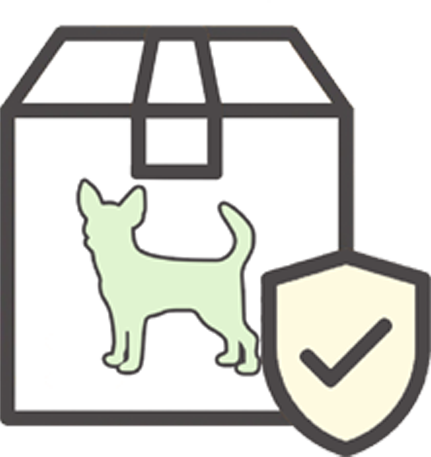Real Grass Versus Artificial Grass for Four-Legged Family Members
Friday, November 08, 2019 02:07:14 PM America/Los_Angeles
It's a conundrum that has plagued homeowners for years -- real grass or artificial? If you're among the many who wonder which form of backyard grass is best for your pet, consider a few of the pros and cons of both options.
Benefits of Artificial Grass
Artificial grass is typically constructed with plastic. This means it's often manufactured using recycled materials, which is always a plus for planet-conscious families. This covering can be made from old tires or plastic bottles and requires no extra feeding, no watering, and no mowing. Subsequently, there's no worry about wasting water to keep it green. There are no toxic fertilizers required to maintain it, and no smoke is emitted from gas-powered lawn mowers to keep it neat.
Artificial grass can also last upwards of 25 years. Your dog can relieve himself on artificial grass just as he can on the real thing. These require picking up the waste and routinely hosing down the section of lawn afterward. But even with routine cleaning, the artificial grass can retain smells after continued use. Also be sure to avoid any artificial grass that contains lead. These are mostly older out-of-circulation products.
Benefits of Real Grass
Of course, there's no substitution for the fresh summer scent of a newly mown lawn. You won't get that with artificial turf. You won't get the whole experience of that first, refreshing mow after a long winter either. Real grass grows freely in most backyards, though it may require fertilization and regular re-seeding. Real grass won't show wear and tear from heavy foot traffic over time if it's properly maintained and pets love it. Dogs and cats who like to dig will truly enjoy the dirt that comes with a natural lawn.
DoggieLawns offer the feeling of real grass even when you're not home to let your dog out or during those long dreadful winters when grass is under layers of snow!
Drawbacks of Fake Grass
Artificial grass is expensive to purchase and install, anywhere from $5 to $20 per square foot, depending upon several factors, including region and type. Once it's down, however, it's down for years with no interruption.
Some argue that covering the ground with the equivalent of a plastic carpet may not be the best decision for the existing grass and insects beneath it. Under the wrong conditions, it can be bad for paw pads, too. In some climates, this type of grass can become uncomfortably hot, heating up the air around it and burning the feet of your furry friend.
Disadvantages of Fresh Grass
Just like all good things, real grass also has its disadvantages. Real grass needs constant mowing in the warmer months. It requires food and water regularly, or it can end up being the worst-looking lawn on the block. Pesticides and fertilizers are often used to maintain lawns -- both which are bad for the environment. But if you have real grass, housebreaking your furry friend may be easier. A simple walk around the backyard on a leash will help your pet pick out his favorite spot to "go", and while you'll still have to pick it up anything solid, nature will take care of the rest.
DoggieLawn offers all the benefits of fresh grass without the downsides of pesticides, watering, or even having to let your dog out!
Basically, both options are viable solutions or you and your pet. If you're still on the fence over which type of grass is best, take time to notice your dog's habits. Does he enjoy going in grass like many dogs do? Is he more of a homebody who's only interested in stepping outside to take care of business? Ultimately, you want a backyard that works for all members of your family. If you long for the feel and smell of freshly cut grass on the first hot days of summer, real grass might be your go-to solution!


